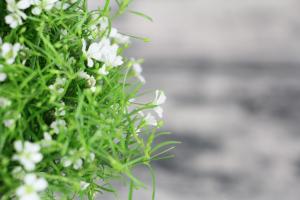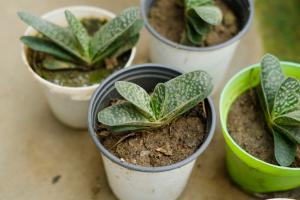Should I Replace the Soil in My Potted Plants?
If you are an avid gardener or plant lover, you may have wondered whether or not you should be replacing the soil in your potted plants. There are many different factors to consider when deciding whether or not to replace soil, including the health of your plants, the type of soil you originally used, and the age of your plants. In this article, we will explore the benefits and drawbacks of replacing soil in potted plants, as well as give you some tips and tricks to help you make the best decision for your garden.
The Benefits of Replacing Soil in Potted Plants
One of the main benefits of replacing soil in potted plants is that it can improve the overall health of your plants. Over time, soil in potted plants can become compacted and depleted of nutrients, making it difficult for plants to access the nutrients they need to thrive. By replacing old soil with fresh, nutrient-rich soil, you can give your plants the boost they need to grow strong and healthy.
Another benefit of replacing soil in potted plants is that it can help to prevent the buildup of harmful bacteria and fungi. When soil is left in the pot for too long, it can become a breeding ground for pests and diseases that can damage your plants. By replacing soil regularly, you can reduce the risk of these problems and ensure that your plants stay healthy and strong for years to come.
The Drawbacks of Replacing Soil in Potted Plants
While there are many benefits to replacing soil in potted plants, there are also some drawbacks to consider. One of the main drawbacks is the cost of buying new soil. Depending on the size of your pots and the number of plants you have, replacing soil can be a costly endeavor. Additionally, if you have a large collection of plants, it can be time-consuming and labor-intensive to replace soil in all of your pots.
Another potential drawback of replacing soil in potted plants is that it can be disruptive to your plants' root systems. When you remove old soil, you may inadvertently disturb your plants' roots, which can cause them to become stressed or damaged. This can be especially problematic for young or delicate plants, which may be more vulnerable to this type of damage.
Tips and Tricks for Replacing Soil in Potted Plants
Despite the potential drawbacks of replacing soil in potted plants, it can be a beneficial practice for maintaining the health and vitality of your plants. If you decide to replace soil, there are a few tips and tricks that can help to make the process easier and more effective.
One of the most important things to keep in mind when replacing soil is to use high-quality soil that is appropriate for your plants. Different plants have different soil needs, so make sure to do your research and select the right type of soil for your specific plants. Additionally, be sure to choose soil that is free of pests and diseases, as introducing these organisms to your plants can be disastrous.
To minimize disruption to your plants' roots, try to be as gentle as possible when removing old soil. You can use a small trowel or fork to loosen the soil and remove it in small sections. Be sure to remove as much old soil as possible, but be careful not to damage the roots in the process.
Finally, be sure to water your plants thoroughly after replacing soil to help them adjust to their new environment. You may also want to add some fertilizer to the new soil to give your plants an extra boost of nutrients.
Conclusion
So, should you replace the soil in your potted plants? The answer ultimately depends on your specific plants and circumstances. However, if you have noticed that your plants are struggling or if you have had problems with pests or diseases in the past, it may be worth considering replacing soil to give your plants a fresh start. Just be sure to use high-quality soil, be gentle when removing old soil, and water your plants thoroughly after replanting to ensure their health and vitality.

 how many times do yo...
how many times do yo... how many planted tre...
how many planted tre... how many pine trees ...
how many pine trees ... how many pecan trees...
how many pecan trees... how many plants comp...
how many plants comp... how many plants can ...
how many plants can ... how many plants and ...
how many plants and ... how many pepper plan...
how many pepper plan...
































